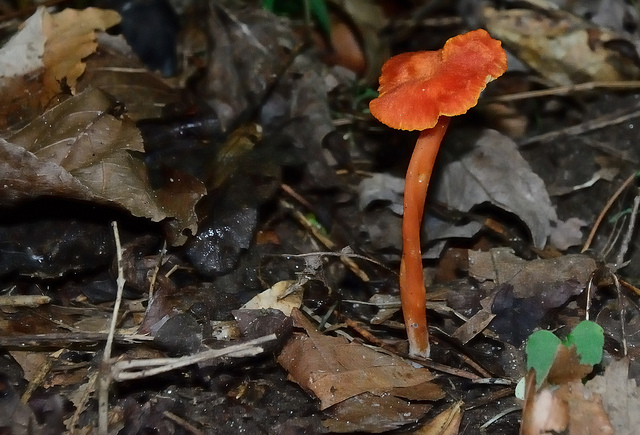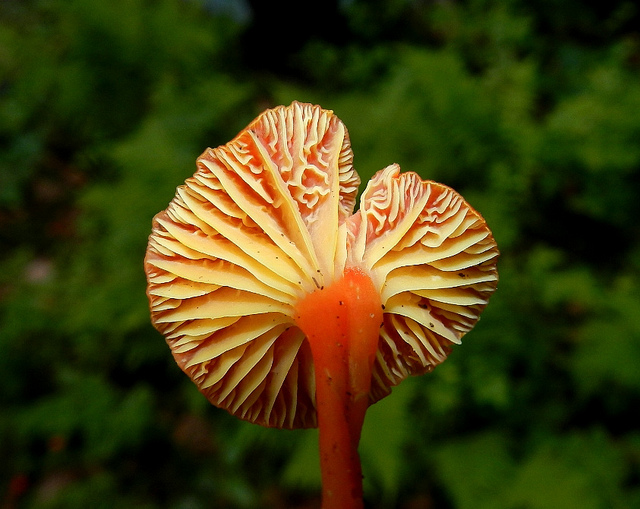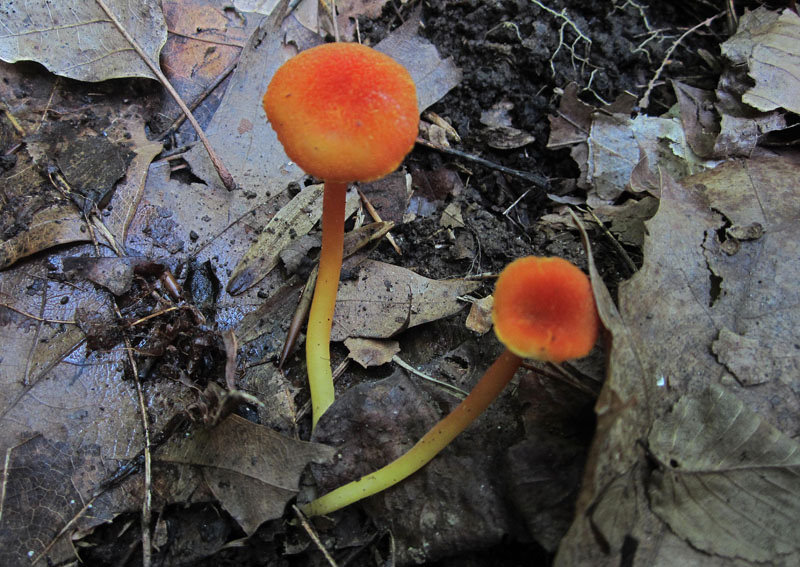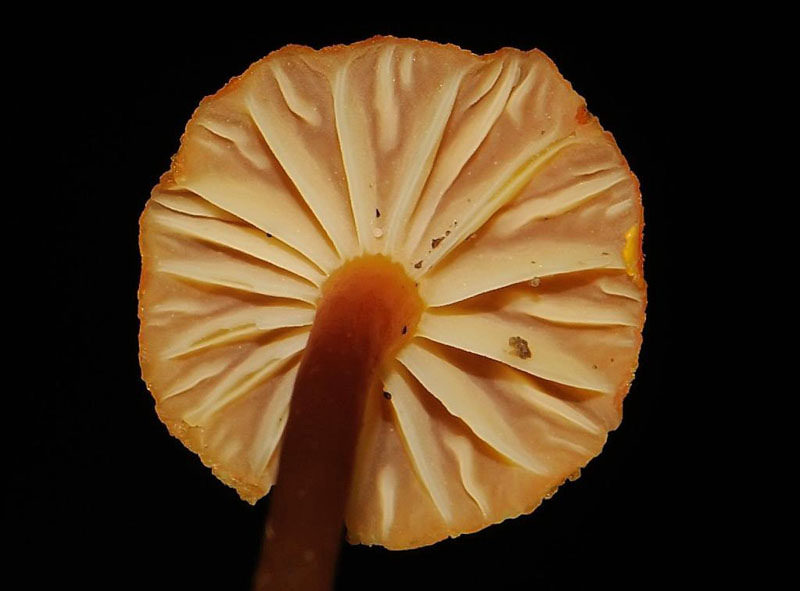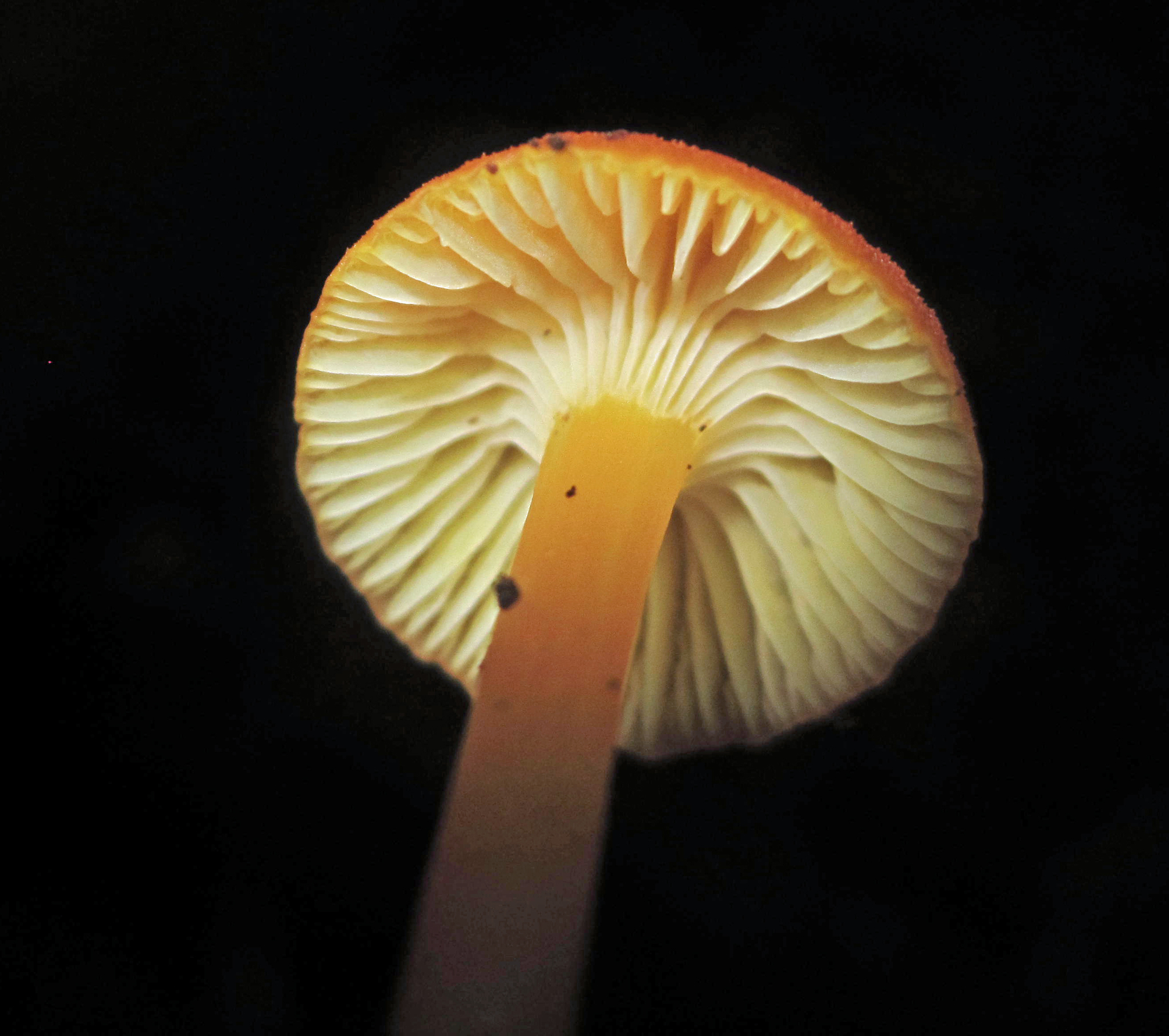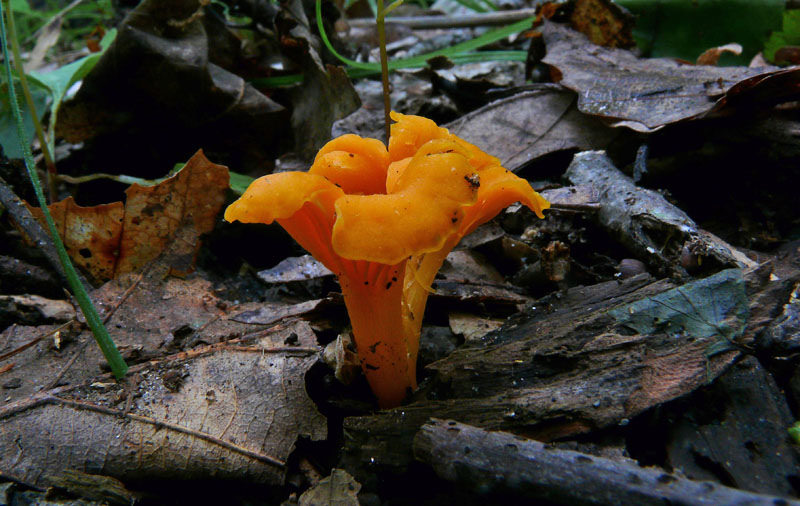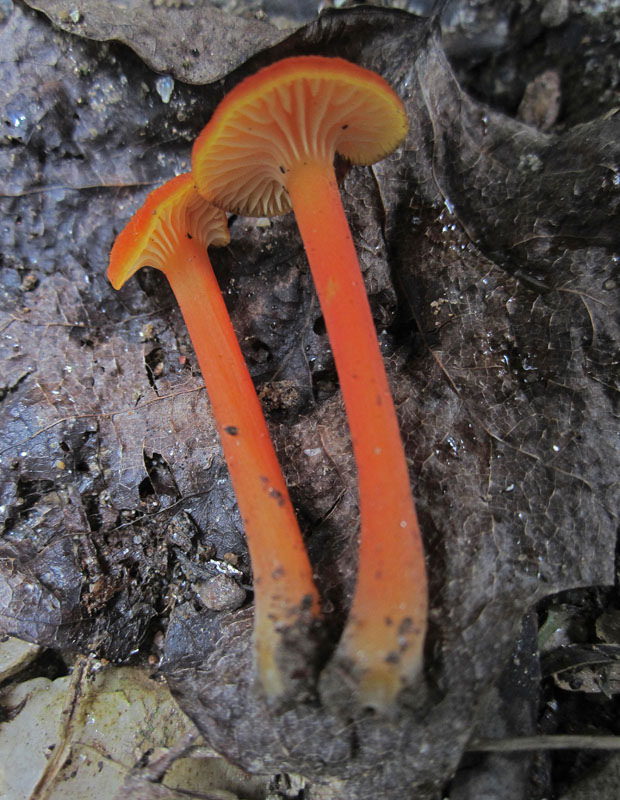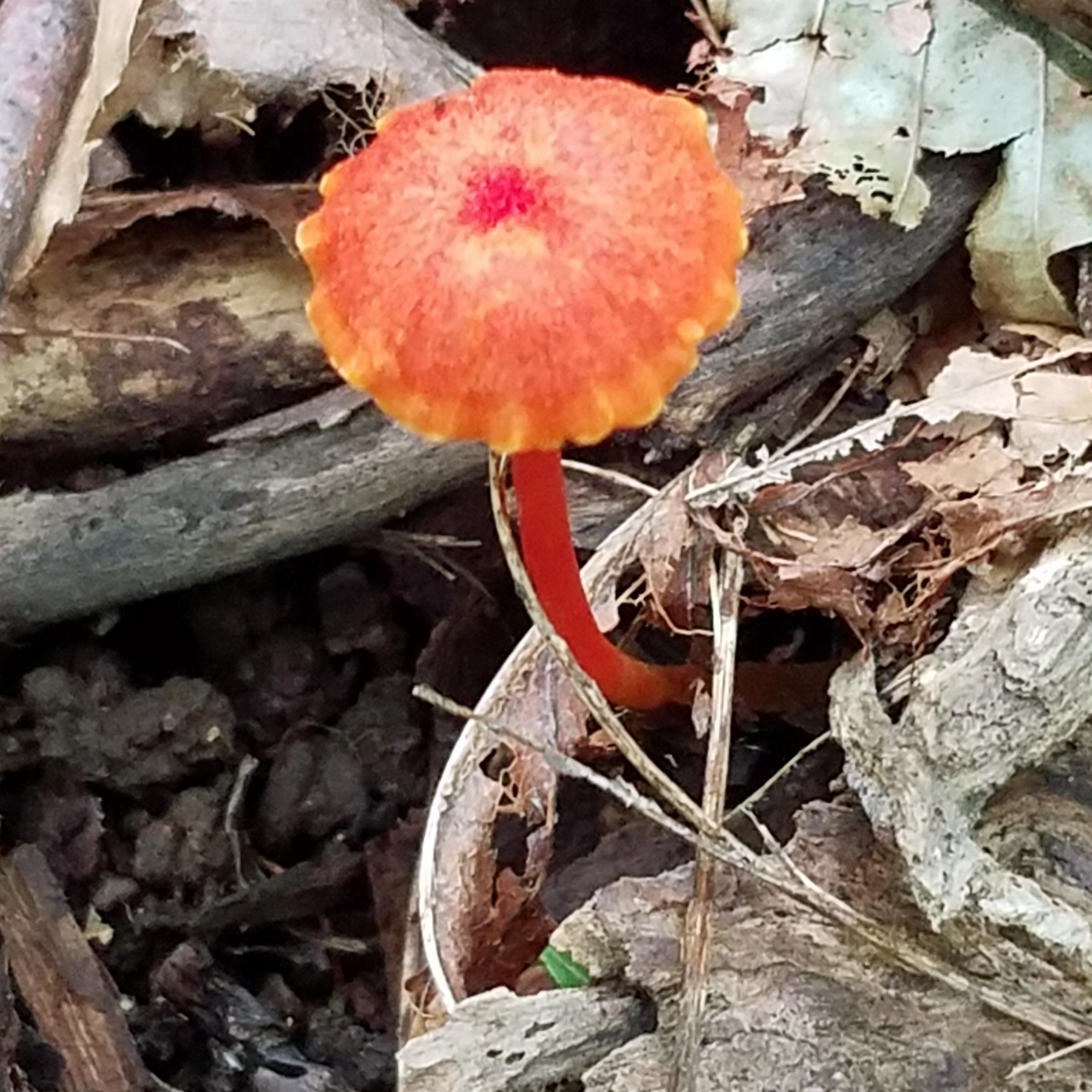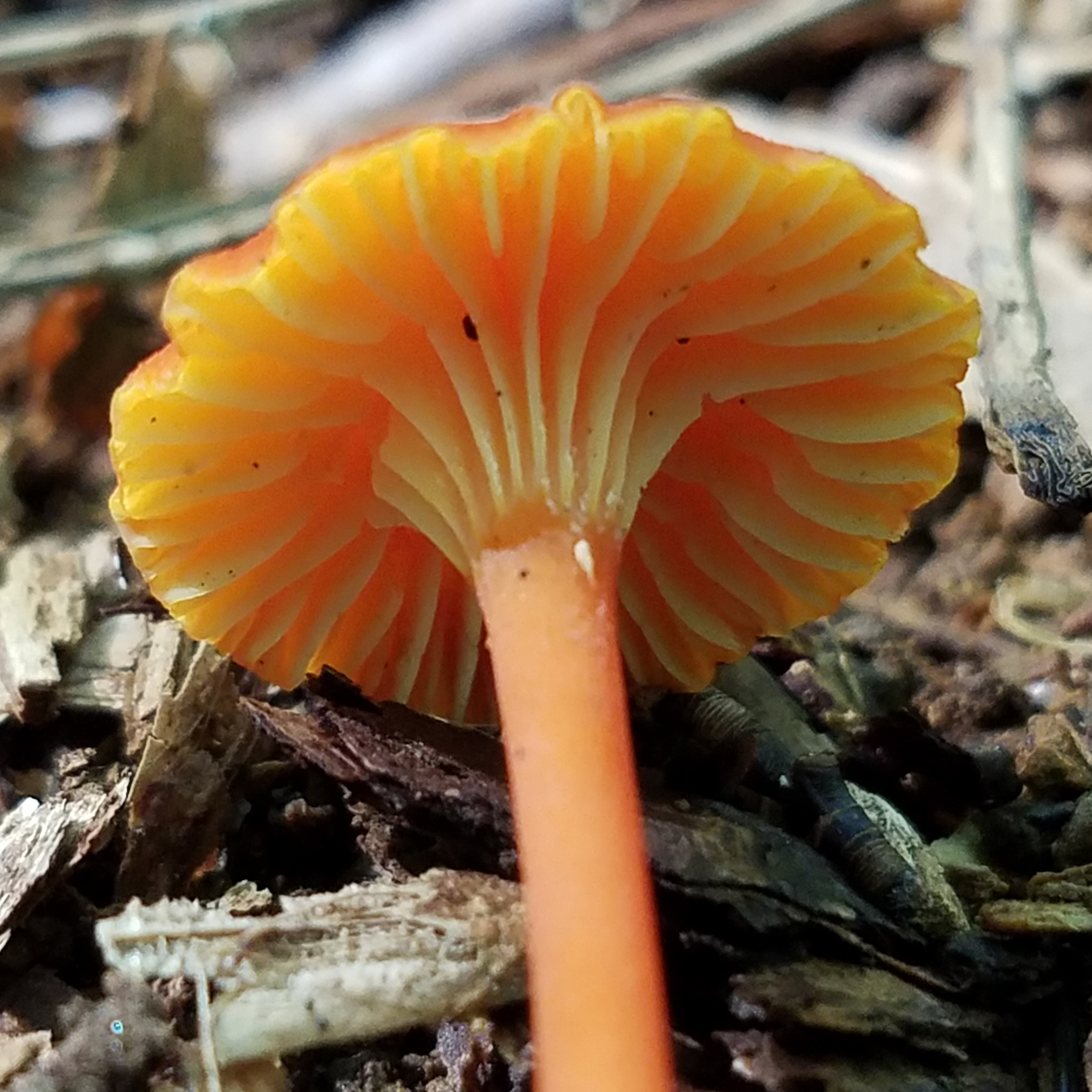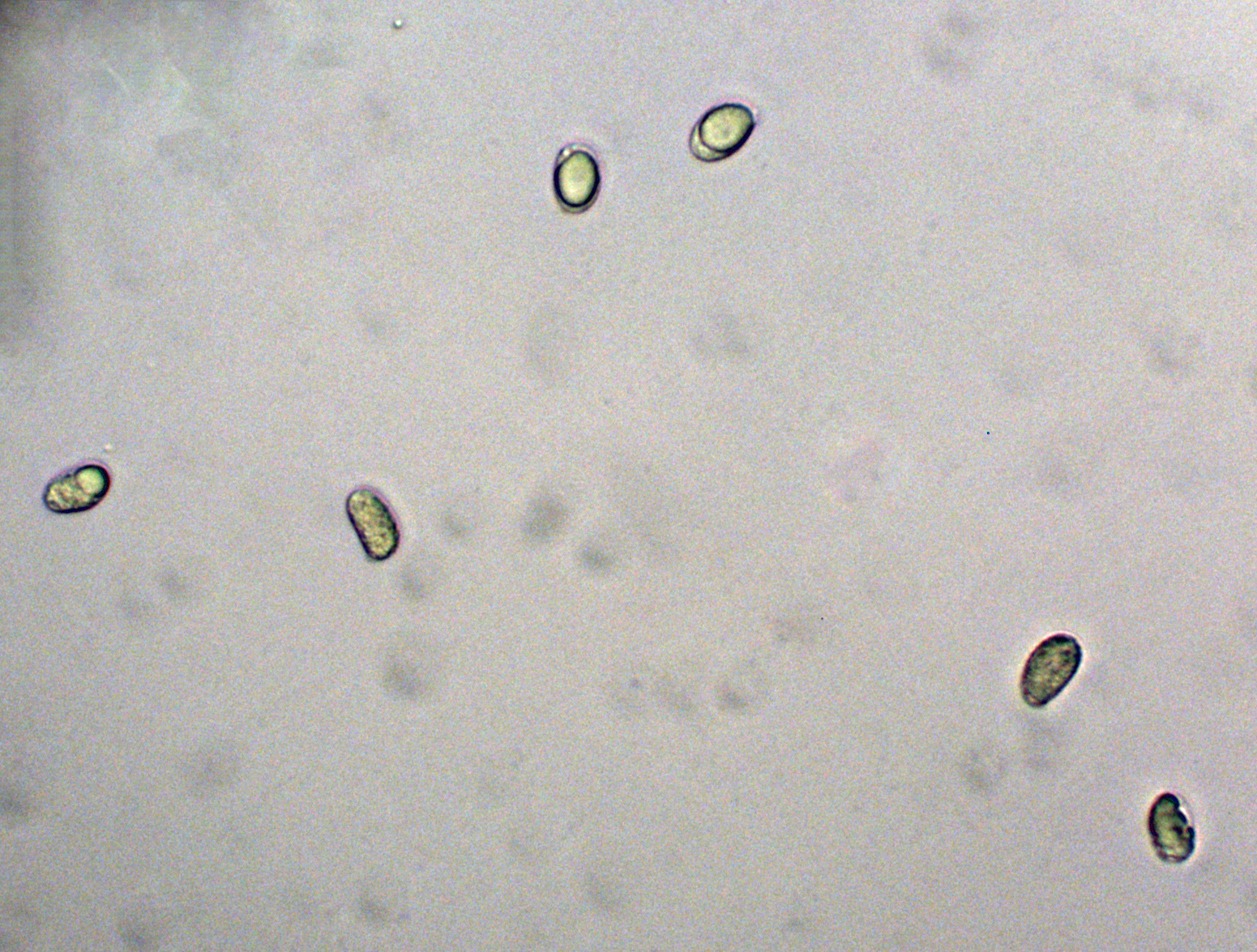Map Snapshot






12 Records
Description
Cap: Orange to scarlet, paler in age; convex to flat; thin flesh is colored like cap or yellowish. Gills: Usually strongly decurrent; white to yellow-orange. Stalk: Cap color or paler; proportionately long for size of cap; often pale at base (J. Solem, pers. comm.).
Where To Find
Groups/clusters on humus and decaying wood (J. Solem, pers. comm.).
Seasonality Snapshot
Eating mushrooms can be dangerous. One should do so only with expert advice and great care. MBP accepts no liability for injury sustained in consuming fungi or other biodiversity. Use of media featured on Maryland Biodiversity Project is only permitted with express permission of the photographer.
A Chanterelle Waxy Cap in Howard Co., Maryland (7/5/2013).
View Record Details
Media by
Richard Orr.
The gills of a Chanterelle Waxy Cap in Howard Co., Maryland (7/5/2013).
View Record Details
Media by
Nancy Magnusson.
Chanterelle Waxy Caps (fruiting bodies) in Howard Co., Maryland (7/5/2013).
View Record Details
Media by
Joanne Solem.
A Chanterelle Waxy Cap (gills) in Howard Co., Maryland (8/13/2011).
View Record Details
Media by
Richard Orr.
Chanterelle Waxy Cap in Howard Co., Maryland (8/8/2018). (c) Joanne and Robert Solem, some rights reserved (CC BY-NC).
View Record Details
Media by
Joanne Solem.
Chanterelle Waxy Cap (fruiting bodies) in Howard Co., Maryland (6/21/2009).
View Record Details
Media by
Robert Solem.
Chanterelle Waxy Caps (fruiting bodies removed from substrate) in Howard Co., Maryland (8/9/2013).
View Record Details
Media by
Joanne Solem.
Chanterelle Waxy Cap in Howard Co., Maryland (9/14/2020). (c) Joanne and Robert Solem, some rights reserved (CC BY-NC).
View Record Details
Media by
Joanne Solem.
Chanterelle Waxy Cap in Howard Co., Maryland (9/14/2020). (c) Joanne and Robert Solem, some rights reserved (CC BY-NC).
View Record Details
Media by
Joanne Solem.
Spores of Chanterelle Waxy Cap in Howard Co., Maryland (8/8/2018). (c) Joanne and Robert Solem, some rights reserved (CC BY-NC).
View Record Details
Media by
Joanne Solem.
Source: Wikipedia
| Hygrocybe cantharellus | |
|---|---|

| |
| Scientific classification | |
| Domain: | Eukaryota |
| Kingdom: | Fungi |
| Division: | Basidiomycota |
| Class: | Agaricomycetes |
| Order: | Agaricales |
| Family: | Hygrophoraceae |
| Genus: | Hygrocybe |
| Species: | H. cantharellus
|
| Binomial name | |
| Hygrocybe cantharellus | |
| Synonyms[1] | |
Hygrocybe cantharellus, commonly known as chanterelle waxy cap, is an agaric (gilled mushroom) in the family Hygrophoraceae. It is found in eastern North America[2] and Australia.[3] The European Hygrocybe lepida was previously referred to this name,[4] but is now known to be distinct.[5]
References
[edit]- ^ "GSD Species Synonymy: Hygrocybe cantharellus (Schwein.) Murrill". Species Fungorum. CAB International. Retrieved 2014-02-28.
- ^ Miller Jr., Orson K.; Miller, Hope H. (2006). North American Mushrooms: A Field Guide to Edible and Inedible Fungi. Guilford, CN: FalconGuide. p. 62. ISBN 978-0-7627-3109-1.
- ^ Young AM. (2005). A Field Guide to the Fungi of Australia. UNSW Press. p. 138. ISBN 978-0868407425.
- ^ Boertmann D. (2010). The genus Hygrocybe (2nd ed.). Copenhagen: Danish Mycological Society. ISBN 978-87-983581-7-6.
- ^ "The Global Fungal Red List Initiative: Hygrocybe lepida". Retrieved 2022-08-02.
External links
[edit]
